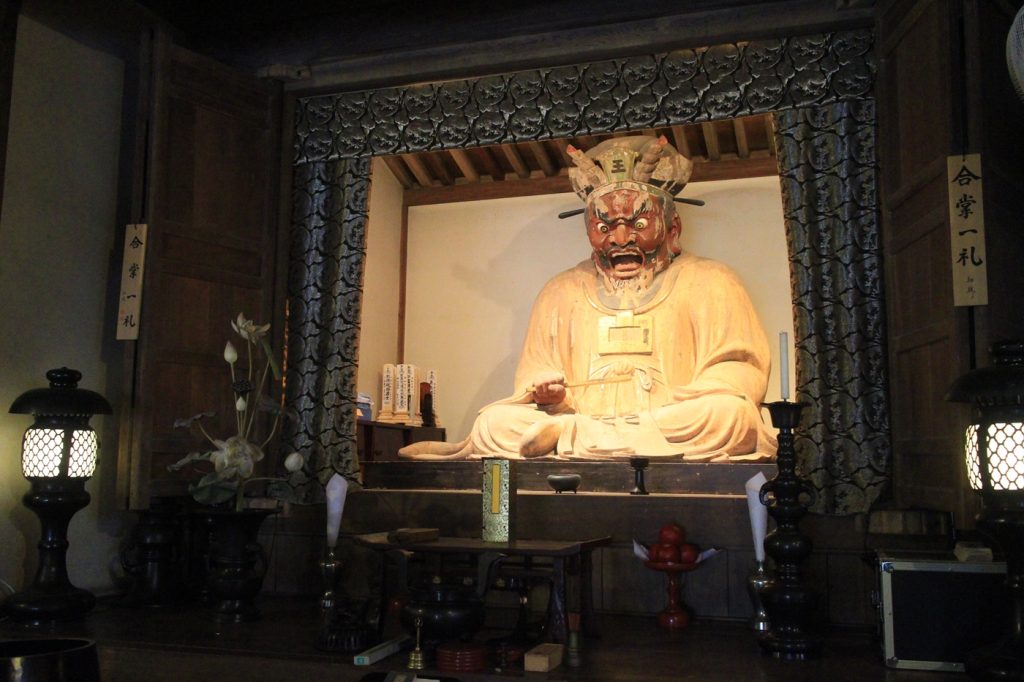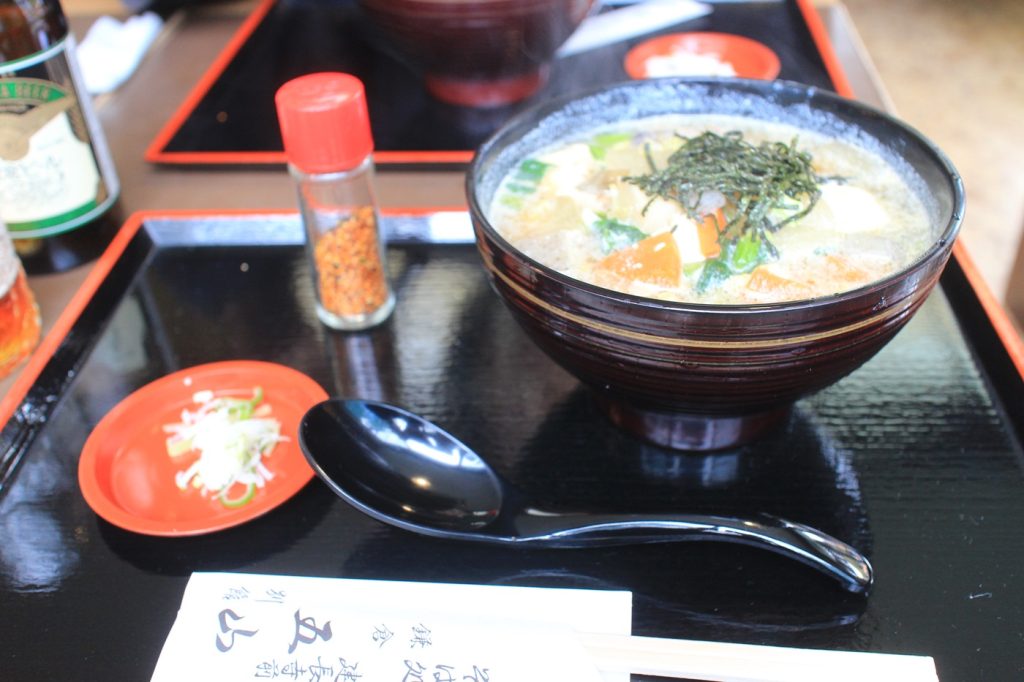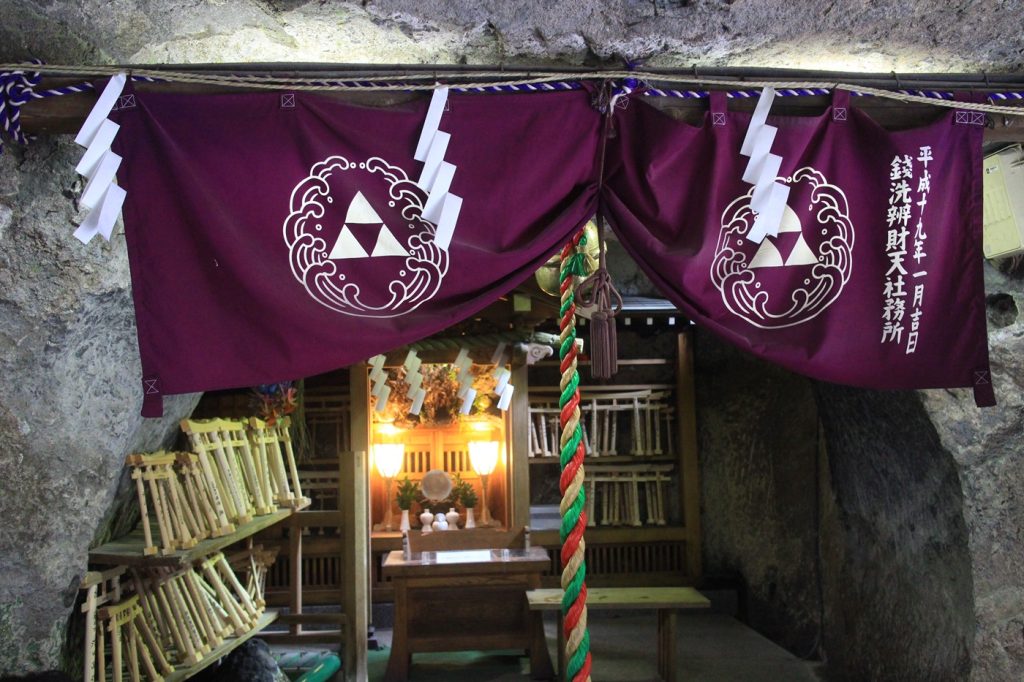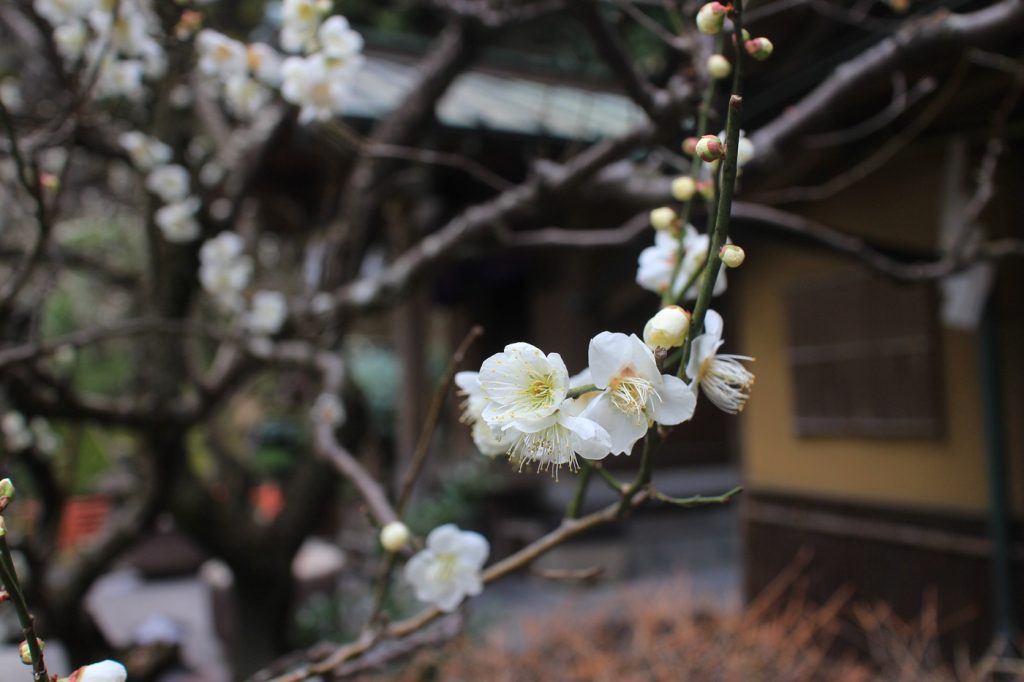Kamakura, Kanagawa Feb.17, 2024
The great king Yama, Zeniarai Benten and Kenchinjiru Soba
A few days after Haruichiban, the first strong southern winds of the year blew, I went to Kamakura to take a walk from Kita-Kamakura to Kamakura. I got on the train to Ofuna at 10:10 at JR. Ishikawa-Cho station and changed the line to Yokosuka Line for Kita-Kamakura. It was just half an hour of train ride. It was cloudy all day. But, it was warmer with no wind for February, the coldest month of the year.

I started to walk from Kita-Kamakura toward Kamakura along the road. Within 20 minutes, I arrived at Ennoji Temple, which enshrines the statue of Emma, the great king Yama, who is believed to be the judge of afterlife in Buddhism. In the religion, it is believed everyone who died will stand trial on their behavior during their life. Yama will decide whether you can go to Heaven or hell after series of long and detailed interrogations. If you acknowledged your past misdeeds and swore to reform in front of the statue during your life here, you would not be questioned about what you had done at the tribunal. There I saw a lot of people, man and women, young and old, come this temple and pray seriously. I found statues of deities are placed in the same hall. One of them is Bodhisattva who intercedes with Yama for you. It is interesting to me that they have an Our Lady in Buddhism. It is very nice to know there is always salvation in this life whatever you believe in.

I left the temple and decided to have lunch early before noon. There was Soba Buckwheat noodle shop near Kenchoji Temple, where Kenchin Jiru, or Vegetarian soup is believed to have been invented by their monastery chefs. I ordered Kenchin Soba noodle which contains Daikon radish, carrots, other winter vegetables and soba noodle in a soy sauce based soup. It is steaming out of the cup. It tasted good with soft vegetable and mild soup and made my cold body after walking outside warm.

After lunch, I headed to Zeniarai Benzaiten through the Kamegayatsuzaka pass, where the narrow winding road was carved out of the mountain in the medieval age. People come to the shrine to pray for their monetary fortune. They believe money would come back multiplied when you rinse notes or coins by spring in the shrine and use them. Benzaiten or Benten is Saraswati, Indian Goddess of River in Hinduism. The believe was brought to Japan in ancient times by way of China and Korea, mingled in our culture before knowing and turned to be worshipped in Shinto religion. People come to Benzaiten shrines to wash money to purify in a hope they may become prosperous through the purified money being used in business in right way. Nowadays, many come to the shrine for monetary benefits. Zeniarai Benzaiten in Kamakura is very popular. But there are other across the country though not known well.

In the precinct there was a Ume plum tree in full bloom. I could feel the spring is not far. I walked towards Kamakura Station and decided to visit Tsurugaoka Hachimangu shrine as the last stop of the day. There I had a hot Amazake, a sweet drink made of fermented rice. It was around 4 o’clock. I am not sure how long I had walked in total. It was quite a good walk.